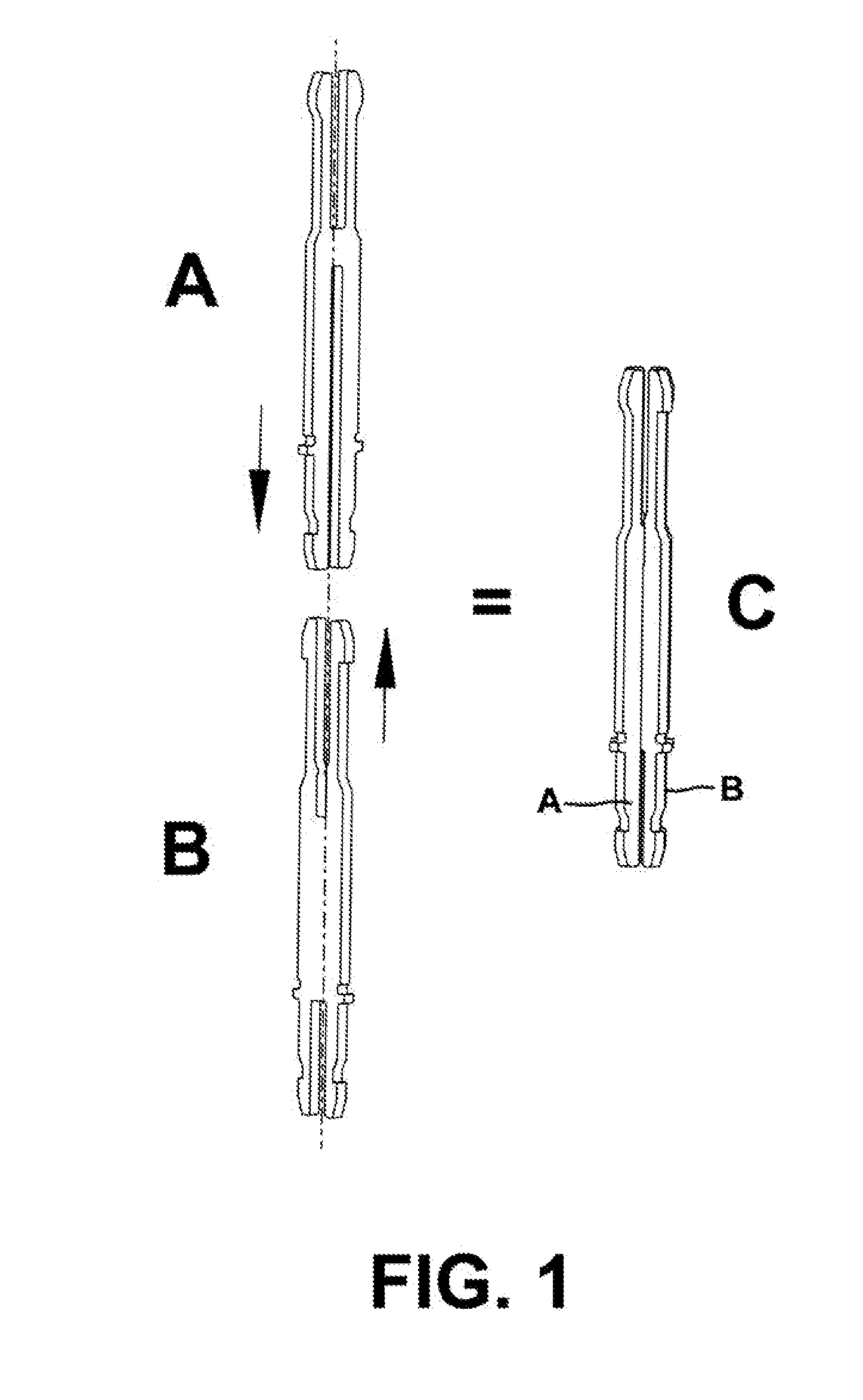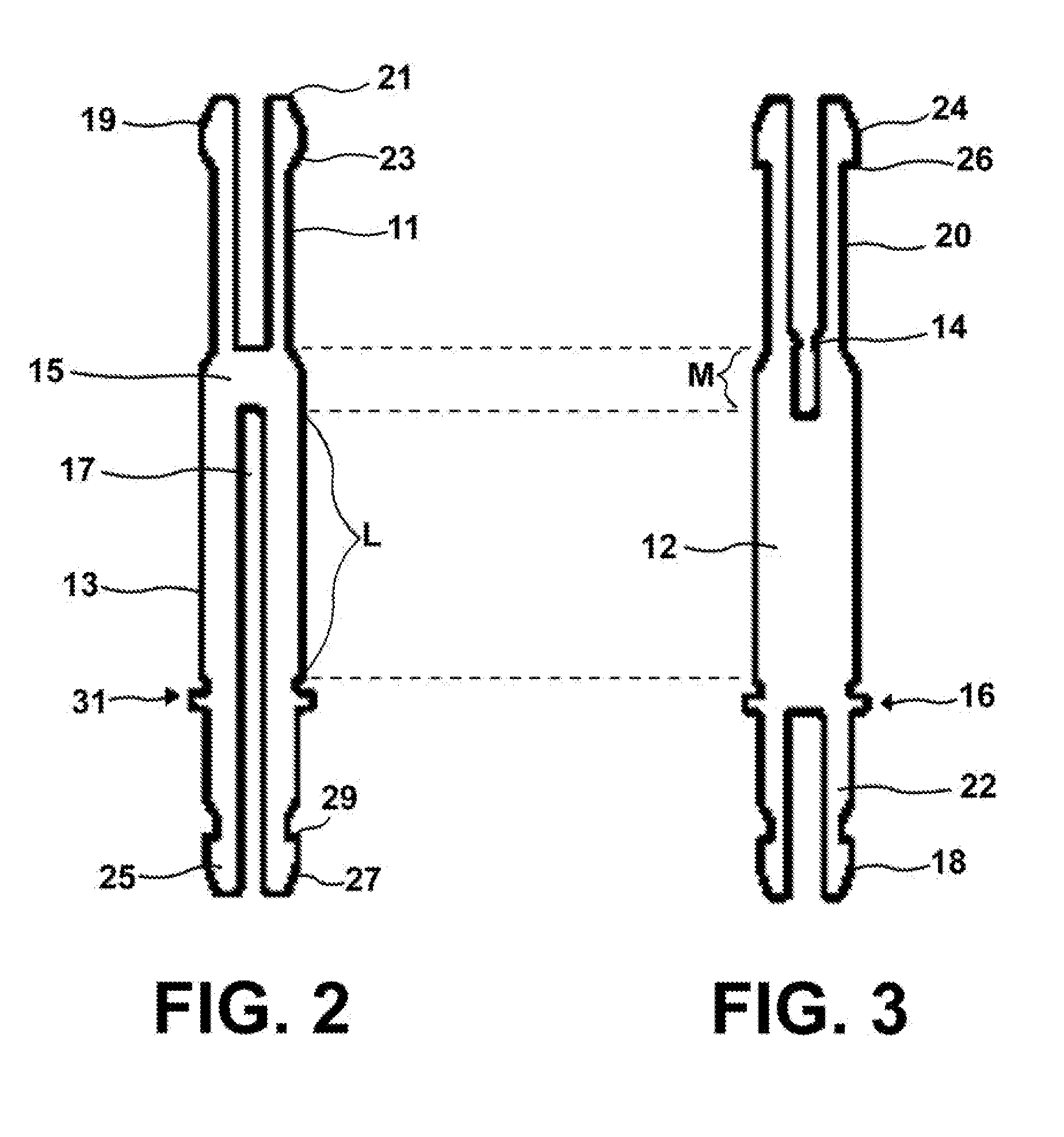Two-piece heat sink stud
- Summary
- Abstract
- Description
- Claims
- Application Information
AI Technical Summary
Benefits of technology
Problems solved by technology
Method used
Image
Examples
Embodiment Construction
[0020]Referring now to FIG. 1, two interfitting parts A and B when axially plugged together comprise the assembled mounting stud C. The two parts are preferably, but not limited to, flat sheet metal stampings composed of a metal which is suitable for its intended purpose such as steel. In the completed stud C, the first member A and second member B are shown united with side edge features spaced 90 degrees apart. The individual parts are coextensive being flush at both opposite ends. The resultant mounting stud is sufficiently strong so that it can provide the force necessary to firmly join the fan heat sink, circuit board, and spring components as further described below. Because the stud may be manufactured from inexpensive stamped sheet metal, it is very economical to produce but it is not limited to this method of production. The parts could also be photo etched, laser cut, wire edm cut or water jet cut from flat blanks
[0021]Referring now to FIGS. 2 and 3, the two interfitting h...
PUM
 Login to View More
Login to View More Abstract
Description
Claims
Application Information
 Login to View More
Login to View More - R&D
- Intellectual Property
- Life Sciences
- Materials
- Tech Scout
- Unparalleled Data Quality
- Higher Quality Content
- 60% Fewer Hallucinations
Browse by: Latest US Patents, China's latest patents, Technical Efficacy Thesaurus, Application Domain, Technology Topic, Popular Technical Reports.
© 2025 PatSnap. All rights reserved.Legal|Privacy policy|Modern Slavery Act Transparency Statement|Sitemap|About US| Contact US: help@patsnap.com



